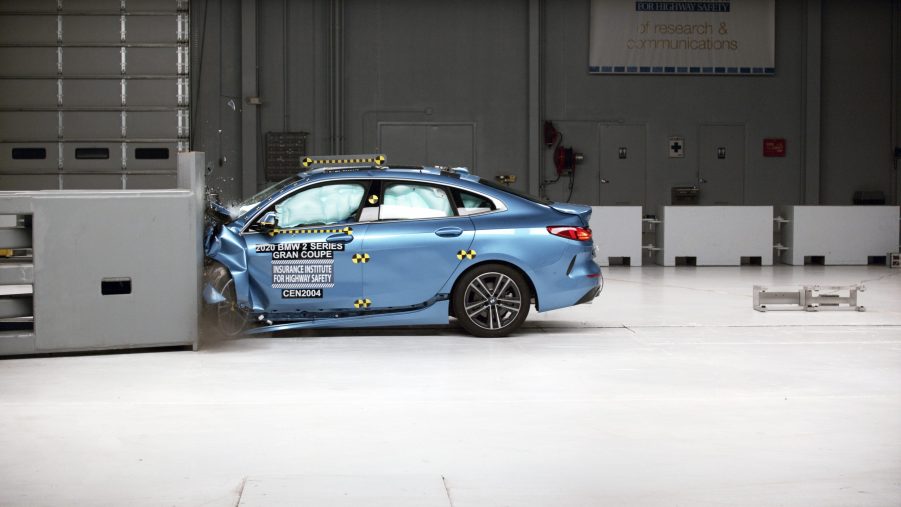
What is Automatic Emergency Braking?
If you’re shopping for a new car online, you’ve probably read the term automatic emergency braking (AEB) many times. Although it’s been available for more than a decade, many people aren’t sure what it does. Buying a vehicle with excellent safety features is essential. What is automatic emergency braking, and is it a feature you need?
How does automatic emergency braking work?

Automatic emergency braking is usually a standard feature on vehicles in 2022. However, sometimes it’s offered as part of a suite of safety features. According to KBB, automakers created the feature to “stop or slow a vehicle before it hits an object in its path.” Using sensors and cameras, the car checks how close the object might be to the front of the vehicle. From there, it monitors the car’s speed to determine if it is moving too fast. Then, it checks whether or not the driver is engaging the brakes to stop the vehicle in time before a collision.
If the vehicle is traveling too fast to stop before the object or the driver isn’t taking action, the car will stop itself. KBB says that some systems only work at lower speeds. Primarily, this is to prevent minor fender benders in stop-and-go traffic. Contrarily, some systems operate at higher speeds, slowing a vehicle as much as possible before impact. Even if the system doesn’t prevent a high-speed accident, slowing down can significantly reduce damage to the cars and injury to those on board.
Lastly, objects the system reacts to vary depending on the brand. In short, some automatic emergency braking systems will stop for pedestrians, animals, or small objects, while others only activate for cars. That’s why a vehicle having AEB as a feature isn’t always enough. Knowing the more delicate details could prove imperative to particular consumers.
Is forward collision warning the same as AEB?

Are forward collision warning and automatic emergency braking the same thing? The two safety systems work hand-in-hand and are better together. However, they aren’t the same thing. Forward collision warning uses front cameras to alert the driver visually or audibly if there’s a possible incoming collision. Moreover, it’s perfect for someone who isn’t paying attention to the road while driving or when another driver in front of you slams on their brakes abruptly.
As with automatic emergency braking, all systems work differently. However, many are used in unison with AEB. Furthermore, not only does the FCW alert the driver of the incoming collision, it alerts the AEB system so it can immediately begin applying the brakes.
Finally, reverse emergency braking is another feature you’ll often catch on automaker’s lists. This is almost the same thing as a forward collision warning, only for when you’re reversing. If you already drive a modern vehicle, it’s likely the reason your car beeps when you back up in a parking lot, and someone you didn’t see is driving passed.
Do you need automatic emergency braking?
Most new cars you can buy in 2022 come standard with AEB. Automakers are always looking to cut costs, so trust us, if you didn’t need it, it wouldn’t be there. According to KBB, this safety feature saves lives frequently. More importantly, the IIHS (Insurance Institute for Highway Safety) speaks highly of the feature.
According to KBB, an IIHS study in 2019 yielded the following: “a 50% reduction in front-to-rear collisions for vehicles with automatic emergency braking. It also identified a 56% decrease in injuries for these types of collisions. As for the reverse automatic braking systems, there was a 78% decrease in crashes compared to cars with only a reverse camera.”
In conclusion, automatic emergency braking is worth it. If automakers are charging extra for a life-saving technology, it’s probably worth it. Luckily, that’s no longer the case for the most part, as it tends to be a standard feature most of the time. What is automatic emergency braking? It’s a safety feature that prevents you from hitting something or someone.



